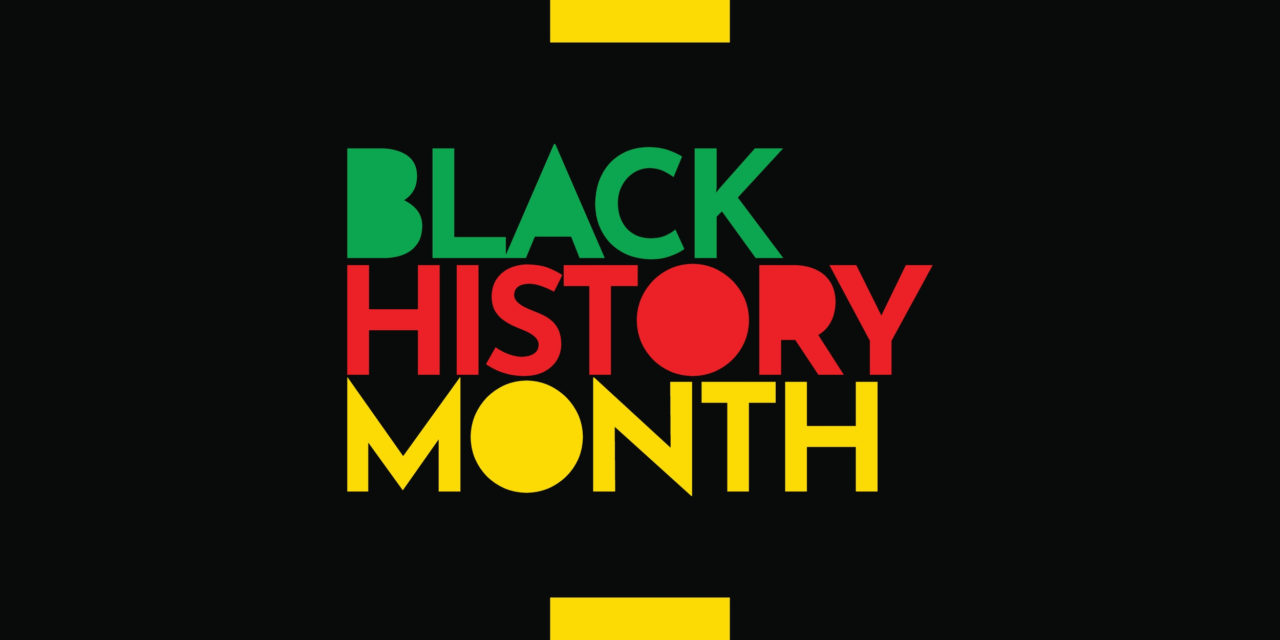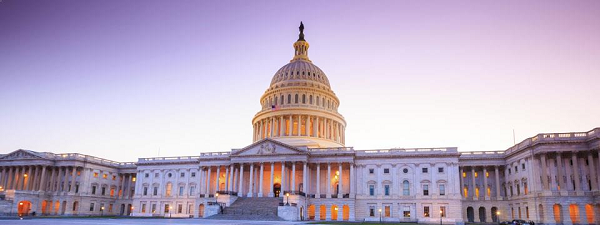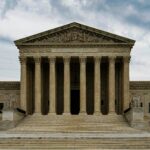Part of the Diversity, Equity, and Inclusion blog post series
This Black History Month, I thought I would share my thoughts about asylum and the people of Haiti.
I am a new attorney, and immigration law was my first practice area. The laws of asylum have always disquieted me. Even with my limited knowledge of United States military history, asylum laws seem to me to give the colonizing West permission to terrorize, pillage, plunder, and lay waste to the global majority and their native lands without any accountability or responsibility for the innocent survivors who simply want to live peaceful lives in the lands of their ancestors.
As I watched the recent refusal of Haitian peoples seeking refuge in the United States by the U.S. government, it made me, once again, stop and reflect on U.S. asylum laws, policies, and practices.
First, a little Black history. The island, known today as Hispaniola, was first inhabited by Taíno (part of the Arawak people) and Ciboney Indians. In 1492, Columbus and his posse enslaved the indigenous peoples to mine gold. Those who did not die from the brutal working conditions died after becoming infected with diseases carried onto the island by their Spanish captors. The island’s indigenous people were almost annihilated. The shortened lifespan of the enslaved indigenous peoples meant that the pool of free laborers became virtually non-existent in the first fifty years of Spanish colonization. As early as 1517, thousands of enslaved African peoples were forced onto the island to replenish its free-labor force and continue mining gold.
Pulling from the sources linked above, you learn that as Spain turned its focus to colonizing other lands, France saw an opportunity to participate in the profitable schemes of enslavement and colonialism on the island. So, in the late 17th Century, France sent armed forces to Hispaniola and took up arms against Spain. In 1697, the French and Spanish colonial invaders split the island into two separate colonies to settle their political conflicts. The French colonizers focused the efforts of the people they enslaved on sugar and coffee production. Between 1660 and 1789, the imported enslaved population rose from roughly 5,000 people to 450,000-500,000.
Once the enslaved population outnumbered the colonizers, rumblings of a revolution grew. The Haitian Revolution, led by former enslaved Africans and affranchise (a class of people consisting mostly of the offspring of colonial and enslaved African parents), began in 1791. In 1795, Haiti became the first county to abolish slavery. After France abolished slavery on the island, the Revolution’s leader, Toussaint Louverture, agreed to make peace with the French. The island’s respite was short-lived. In 1802, the revolution continued after the French invaded Hispaniola yet again. It was not until the French surrendered in 1803 that the fighting ended, and Haiti was declared an independent nation. Revolutionary general, General Jean-Jacques Dessaline, proclaimed himself Emperor Jacques I, and renamed the western portion of Hispaniola “Haiti” after its original Arawak name.
As a result of European colonization, “Haitian society was deeply fragmented by skin colour, class, and gender.” The audacity of formerly enslaved black and semi-free brown peoples to take up arms and fight for equality during the Haitian Revolution is what the small nation has been paying for ever since. The slave-holding West viewed the newly-freed nation as a threat to its booming economy, which only existed because of its ability to subjugate its workforce. In 1825, France demanded Haiti indemnify its lost profits by paying France reparation of 100 million francs (the equivalent of $21 billion in 2017).
According to the United States’ Office of the Historian, the first U.S. occupation of Haiti occurred in 1915 and lasted until 1934. However, the U.S. had been pining for control of Haiti for several decades prior to 1915. The U.S. wanted to erect a strategically placed naval base on the northern coast, allowing the United States “to secure a U.S. defensive and economic stake in the West Indies.” Between 1889-1891, the U.S. was unsuccessful in leasing Haitian land for a naval base. Fearing that other foreign nations could gain power in Haiti, President William Taft, in 1910, gave Haiti a large loan to pay off its international debt and weaken other foreign influence in the tiny nation. That failed miserably. The country was internally unstable, and Haiti’s people remained impoverished. France retained control of Haiti’s trade and finances according to the Franco-Haitian Agreement of 1824, which was the main driver of Haiti’s constant state of debt.
In the early 20th Century, Germany became the biggest threat to U.S. rule in Haiti and the Caribbean. In late 1914 the U.S. sent Marines into Haiti to “remove” $500,000 from the Haitian National Bank “for safe-keeping in New York.” Which, unsurprisingly, led to the United States’ “complete control of the bank,…the assassination of then Haitian President Jean Vilbrun Guillaume Sam by his anti-American political opponents in July of 1915,” and the inevitable (and anxiously awaited by the U.S. government) invasion of Haiti by U.S. troops that same year.
After the 1915 invasion, the “U.S. Government forced the election of a new pro-American President, Philippe Sudré Dartiguenave, by the Haitian legislature in August” of that same year. “The selection of a President that did not represent the choice of the Haitian populace increased unrest in Haiti.” To make things worse, “[f]ollowing the successful manipulation of the 1915 elections, the Wilson administration attempted to strong-arm the Haitian legislature into adopting a new constitution in 1917.” Included in the pro-colonization constitution was the right of foreigners to own land‒something that the Haitians strictly prohibited as a way of ensuring their part of the island would never again come under foreign rule. Because of the legislature’s anti-American sentiments, they instead drafted an Anti-American constitution. The proposed constitution never became law because the United States forced the hand-picked president to dissolve the legislature; and it remained dissolved until 1929.
Since 1929, the United States military has (with the permission and encouragement of U.S. government leaders‒including Presidents) murdered thousands of Haitians; overthrown democratically-elected Presidents; installed Haitian presidents against the will of the Haitian people who democratically elected other leaders and backed Haitian presidents who were very friendly to American influence.
Why does this history matter? Well, in late 2021, the people of the United States were confronted with the news that at the U.S.-Mexico border were tens of thousands of Haitian nationals seeking to enter the U.S. hoping to apply for asylum. Many feared returning to Haiti because of the inherent dangers that come with lack of infrastructure caused by natural disasters and on-going political unrest. The latest cause of Haitian civil unrest was rumored to have been fomented by our own government. What became of those Haitian asylum seekers? Most were sent to Haiti on planes‒even if they had not lived on the island in decades.
What is my point? For those who are not aware, to be eligible for asylum under INA § 208(a), a person must be “physically present in the U.S. or is at a land border or port of entry of the U.S. at the time he or she seeks refuge” and meet the definition of a refugee under INA § 101(a)(42). A refugee under that section is,
any person who is outside any country of such person’s nationality or, in the case of a person having no nationality, is outside any country in which such person last habitually resided, and who is unable or unwilling to return to, and is unable or unwilling to avail himself or herself of the protection of, that country because of persecution or a well-founded fear of persecution on account of race, religion, nationality, membership in a particular social group, or political opinion.
However, statutory language and case law expressly prohibit an asylum seeker from winning an asylum claim if “a persecutor’s conduct furthers his goals in a political controversy[.] [R]ather, the alien must show that it is his or her own, individual political opinion that a persecutor seeks to overcome by the infliction of harm or suffering.” Matter of Acosta, 19 I&N Dec. 212 (BIA 1985). And ‘“fear,” i.e., a genuine apprehension or awareness of danger in another country,’ must be the primary motivation for a person’s request for refuge. “No other motivation, such as dissent or disagreement with the conditions in another country or a desire to experience greater economic advantage or personal freedom in the United States, satisfies the definition of a refugee created in the Act.” Id., at 211, 222.
I say all this to say that the U.S. has no right to turn its back on Haitian immigrants. In my opinion, American asylum laws give the United States permission to plant pro-American governments around the globe and ravage those countries’ resources. After there are no more resources to exploit or benefits to be had, the U.S. Government turns a blind eye to the suffering of the people it leaves behind. While there is humanitarian asylum, it seems to be reserved for those groups of people who might add to the dwindling number of white Americans in the U.S. USCIS used to release statistics which offered some transparency around racial disparities in asylum grants, but no longer does so. I believe that every colonial government that has participated in Haiti’s current humanitarian crisis should have refugee and asylum laws that allow Haitian nationals to enter their land just as freely as those colonizing countries forced themselves, their languages, customs, morals and beliefs, governments, and racial inequities, upon the people of Haiti. The U.S. is one of the greatest persecutors of Haitians and has been for centuries. If any group of people is owed a permanent opportunity to experience greater economic advantage and personal freedom in the United States, it is Haitians.







